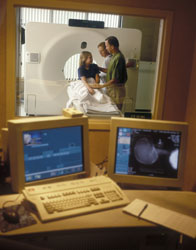New therapies for childhood cancer in the pipeline
Cancer accounts for one of the leading causes of death in European children, second only to accidents. Around a third of these malignancies are ETs, so-called because they are believed to originate in embryonic tissue. Unfortunately, these often prove resistant to current conventional treatment. Unlike adult cancers, early appearance in a child's development means that very few genetic changes have given rise to the tumour. ETs are therefore ideal research candidates for the investigation of cancer-related genomic changes. As new diagnostic tools and therapies are required to reduce the high mortality rate from ETs, the 'European embryonal tumor pipeline' (E.E.T.-Pipeline) project aimed to establish a unique pipeline for the development of pre-clinical drugs for ETs. To achieve this ambitious goal, a multidisciplinary team followed an integrated approach using high-throughput technologies. E.E.T.-Pipeline established two channels, one for state-of-the-art diagnostics and the other for novel drug development and pre-clinical testing. For even more efficient use of resources, both pipelines were linked to a central bioinformatics platform. Meta-analysis further reinforced the integrated approach by linking fresh and existing data on ETs. Post-genomic research has successfully been translated to applications in the clinical setting of paediatric oncology. Pharmaceuticals developed specifically for ET may be adapted for treatment of morphologically related cancers such as melanomas and lung cancers.







